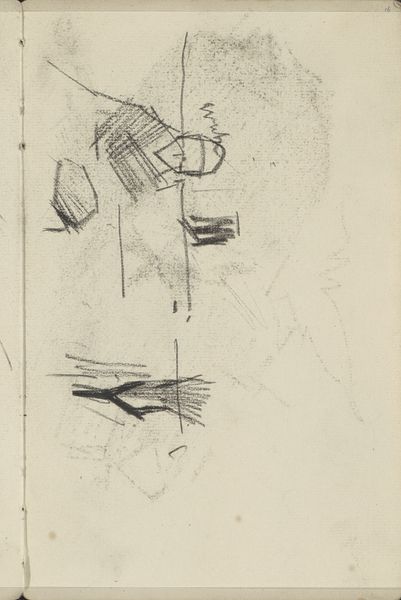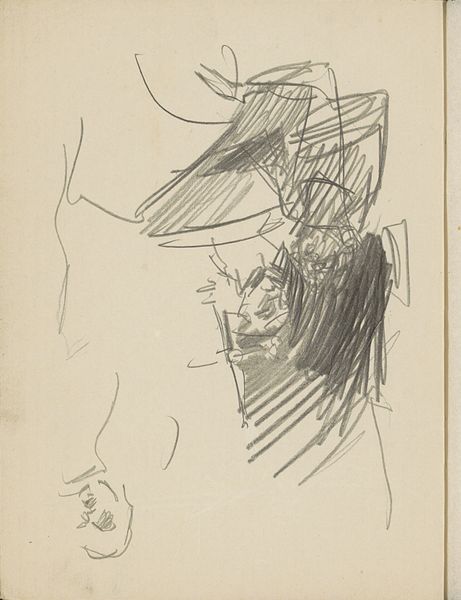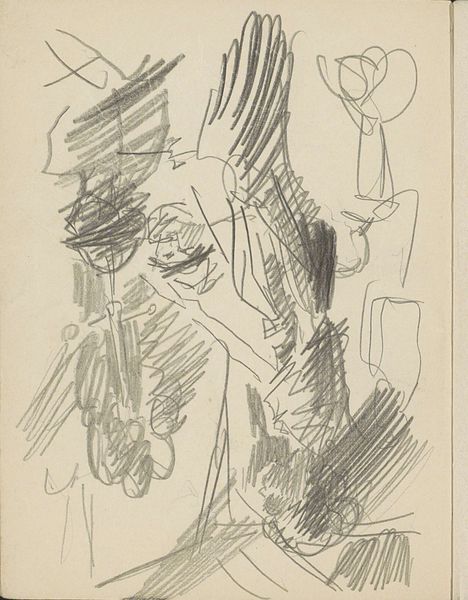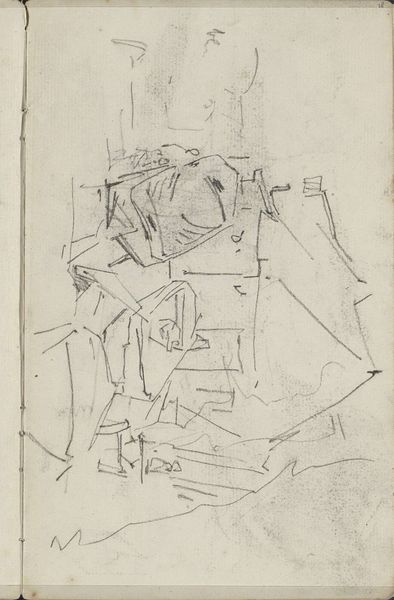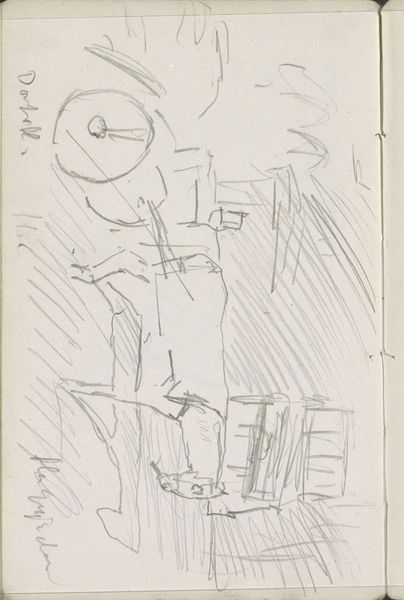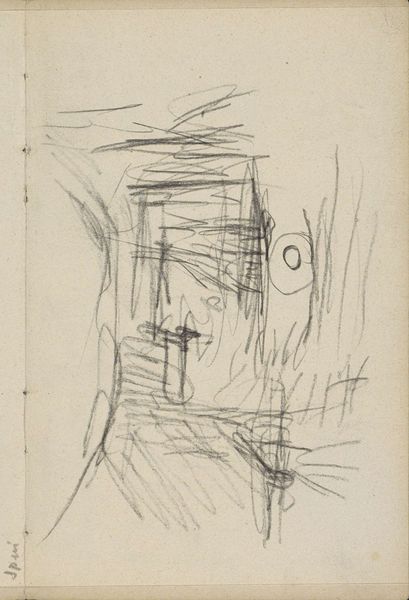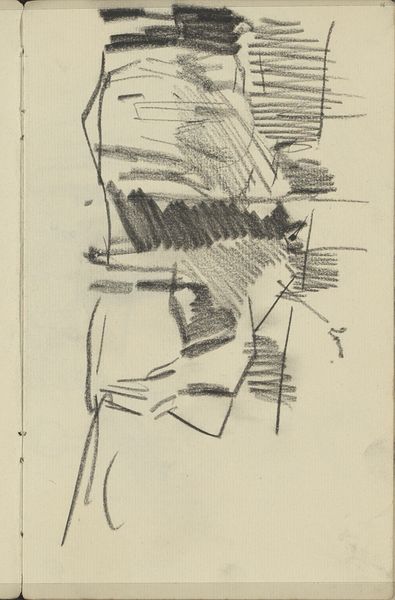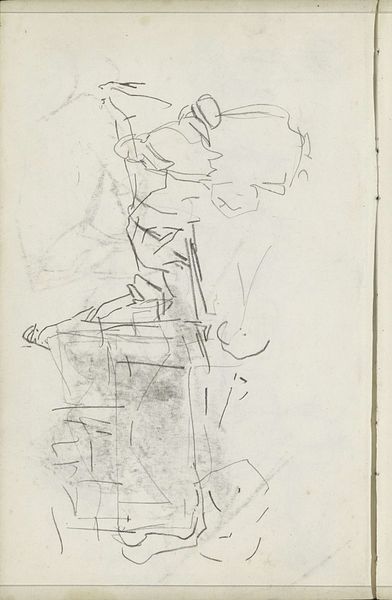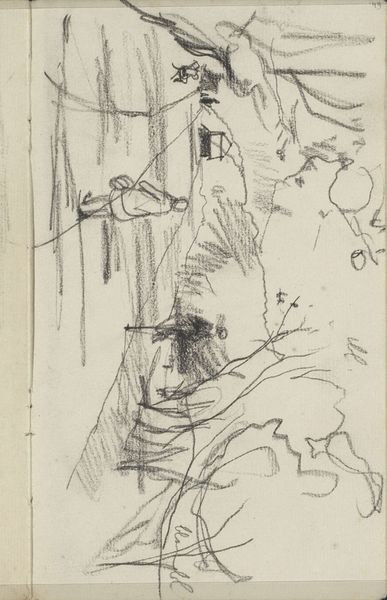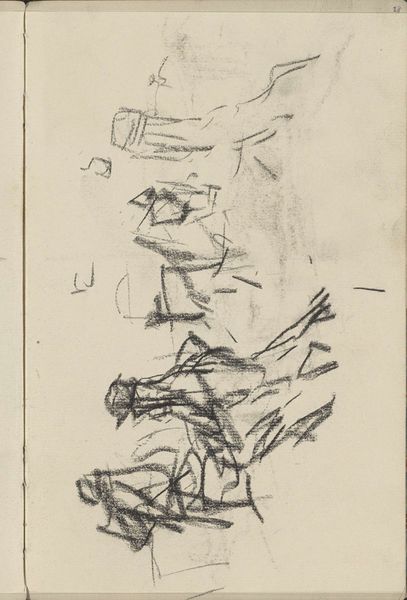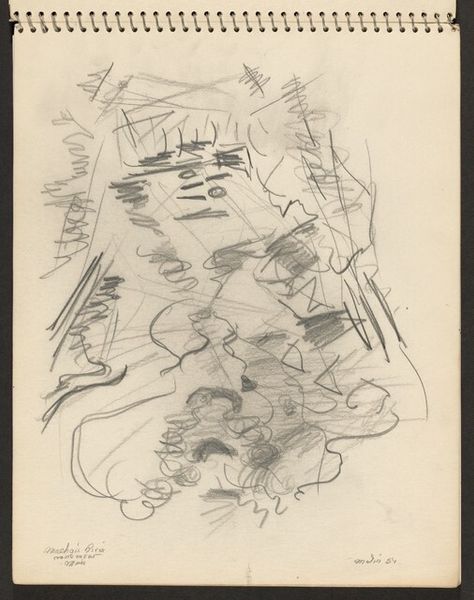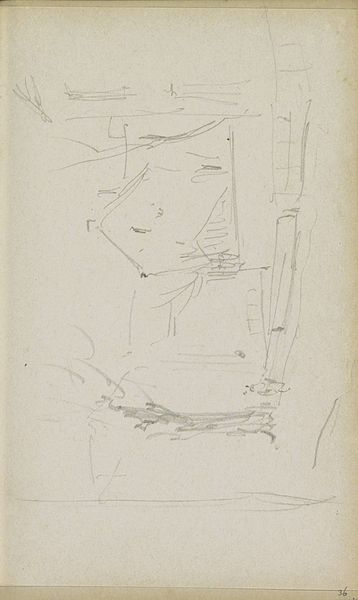
Vrouw loopt trap af in de regen bij Théâtre L'Odeon in Parijs 1895 - 1896
0:00
0:00
Dimensions: height 290 mm, width 235 mm
Copyright: Rijks Museum: Open Domain
Curator: Edouard Crébassa's “Vrouw loopt trap af in de regen bij Théâtre L'Odéon in Parijs," created around 1895, offers us a glimpse into Parisian life through a simple, yet evocative drawing. It is currently held at the Rijksmuseum. Editor: My first thought is: it feels so fleeting. The sketchiness conveys the bustling energy of a rainy day, a transient moment captured in ink and pencil. The umbrellas dominate the foreground in a fascinating jumble. Curator: It is fascinating how the artist creates such a composition from what appear to be limited means. Look at the pencil and ink work. There's a clear interest in capturing a scene from everyday life and then reducing it to its core essence with economical materials and lines. What social classes might we consider the depicted subject to occupy given this information? Editor: Absolutely, and there's a distinct commentary embedded in that simplicity. The woman descending the stairs, her figure rendered with minimal detail, seems almost overwhelmed by the oppressive presence of all of those open umbrellas and their visual mass. Consider, for a moment, the access she has to protected spaces as opposed to that available to women from marginalized classes who lacked social or economic means to participate in events such as the theater. What choices led to that accessibility and mobility? Curator: Right, the work embodies the tension inherent in representing figures within an urban landscape when access to services or mobility might be restricted for women depending on a plethora of intersectional reasons. Perhaps her proximity to the Theatre and those stairs suggests movement both physically and socially but it may be also rife with contradictions or conflicts, if viewed more broadly, such as access to education, performance venues or economic means to participate. Editor: I think it pushes us to reconsider not only the visual experience of the piece but its sociopolitical implications. How Crébassa crafted this scene from a series of linear strokes transforms the material act of drawing into a potent commentary on urban society, even in its most routine moments. Curator: Agreed, looking beyond the artwork's surface unlocks a dialogue around labor, class, and even urban planning and accessibility, offering us multiple perspectives on Parisian life during that time. Editor: Precisely. Crébassa’s choice of ordinary subjects and modest medium serves as an invitation to reflect on the bigger stories of social dynamics happening just beneath what appears to be a random and uneventful snippet of a rainy day in Paris.
Comments
No comments
Be the first to comment and join the conversation on the ultimate creative platform.
